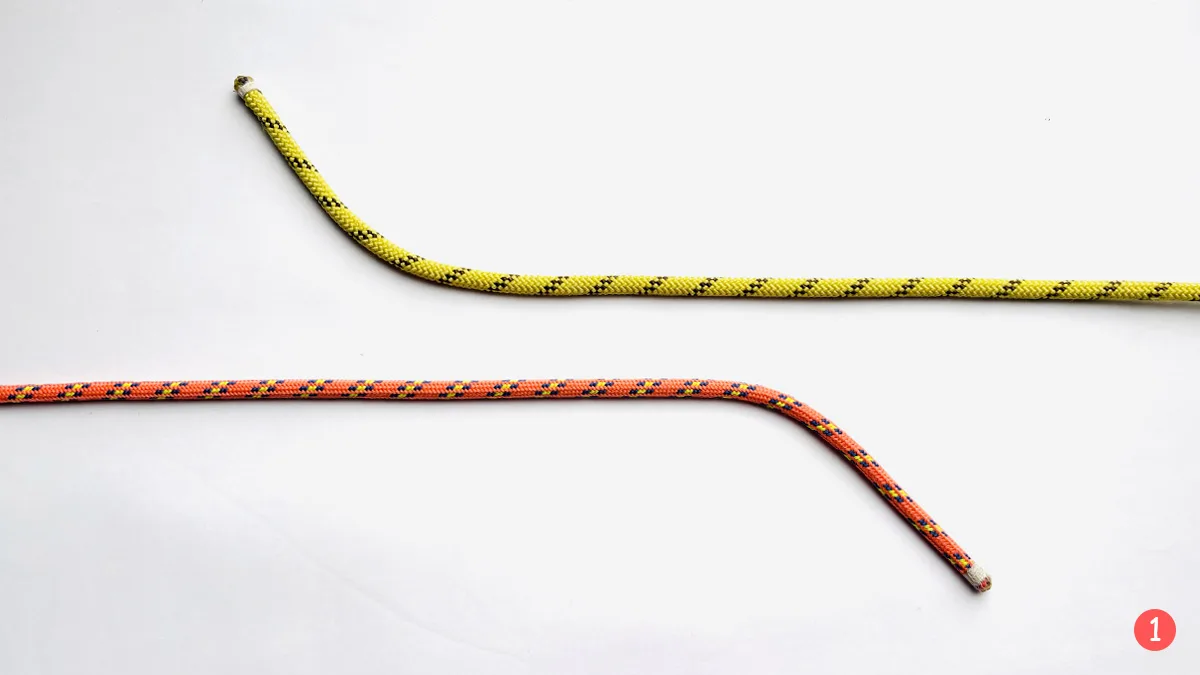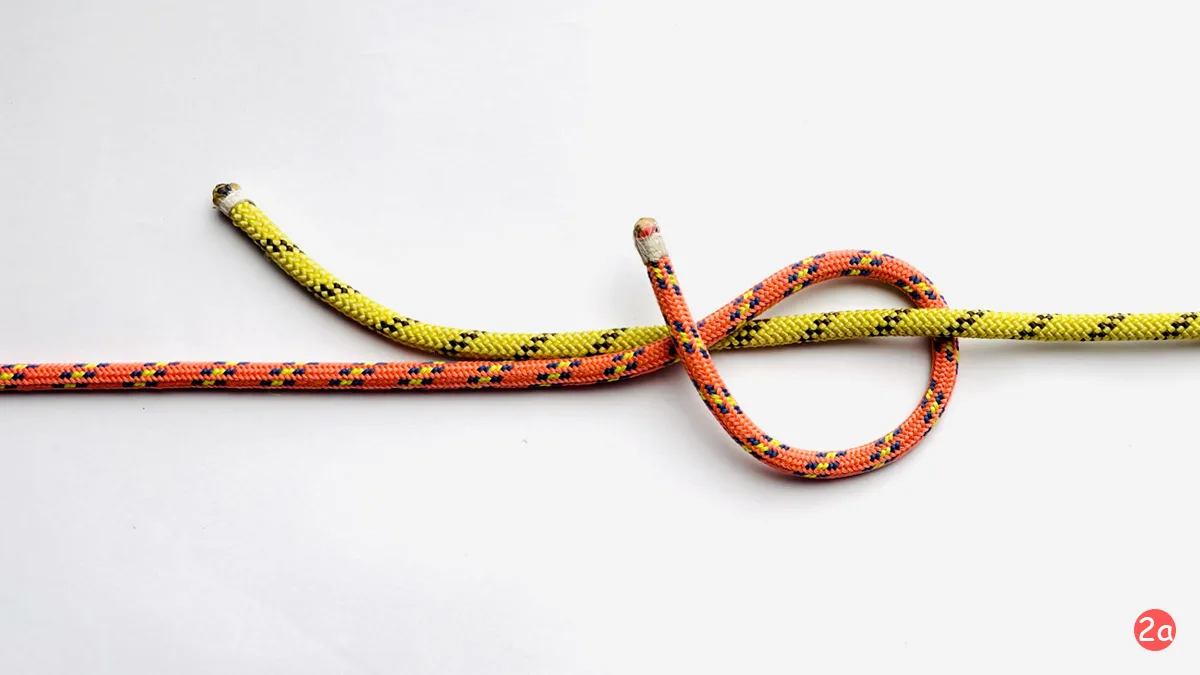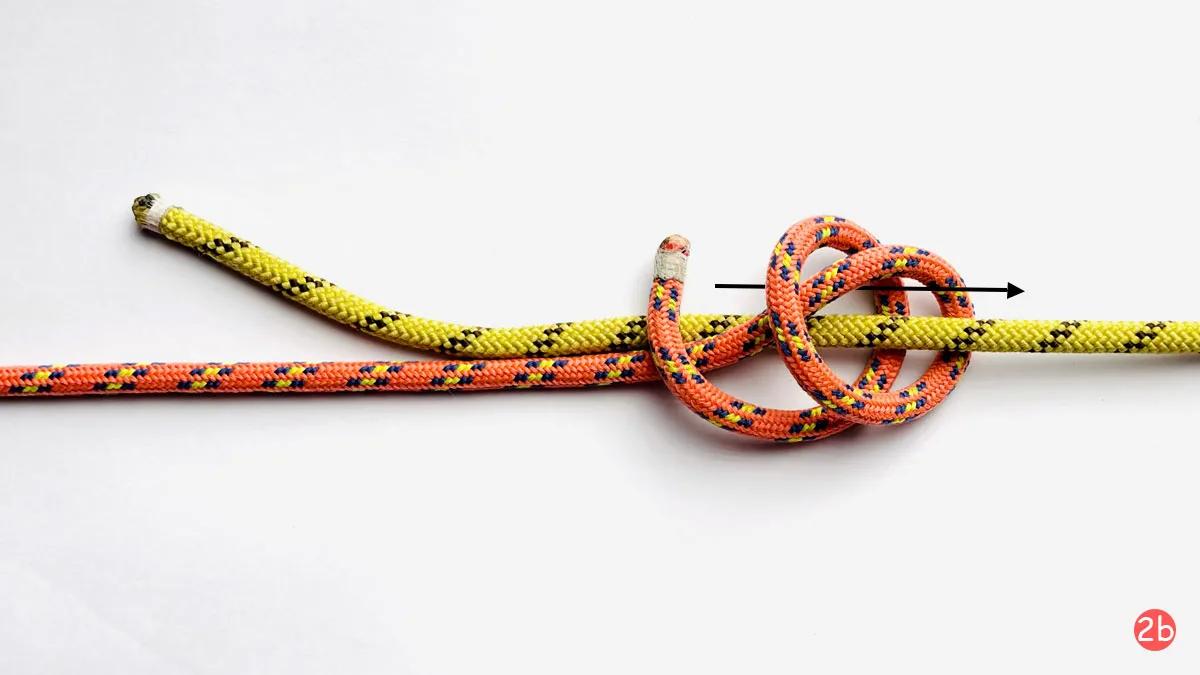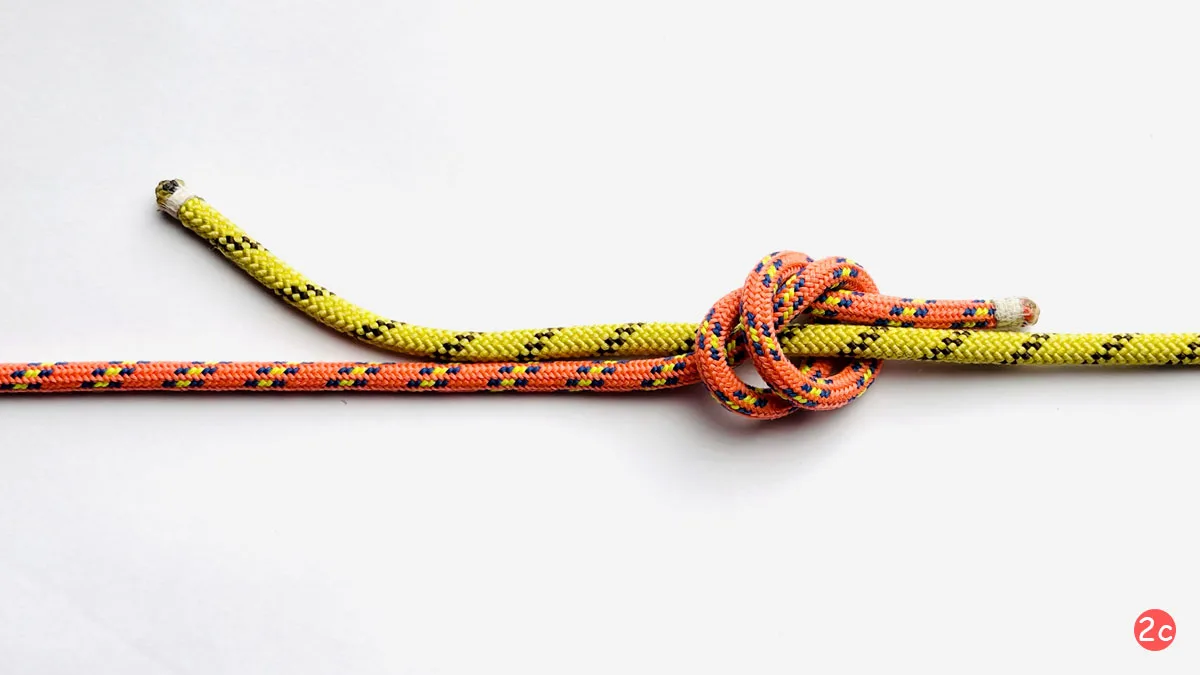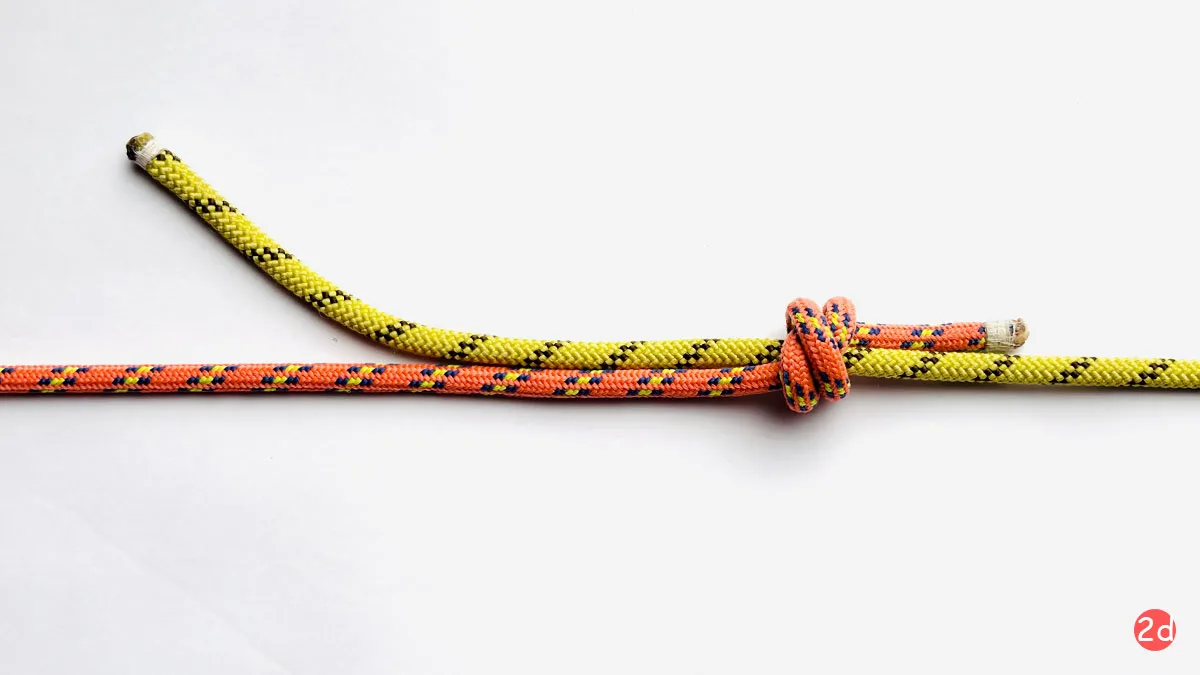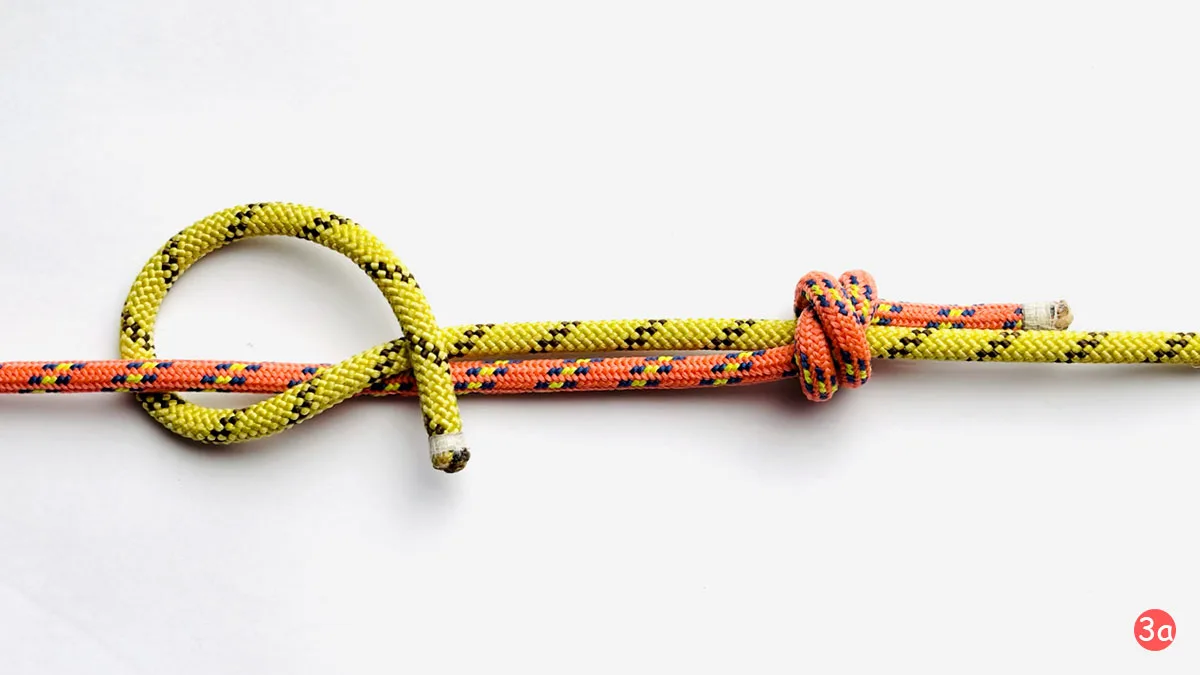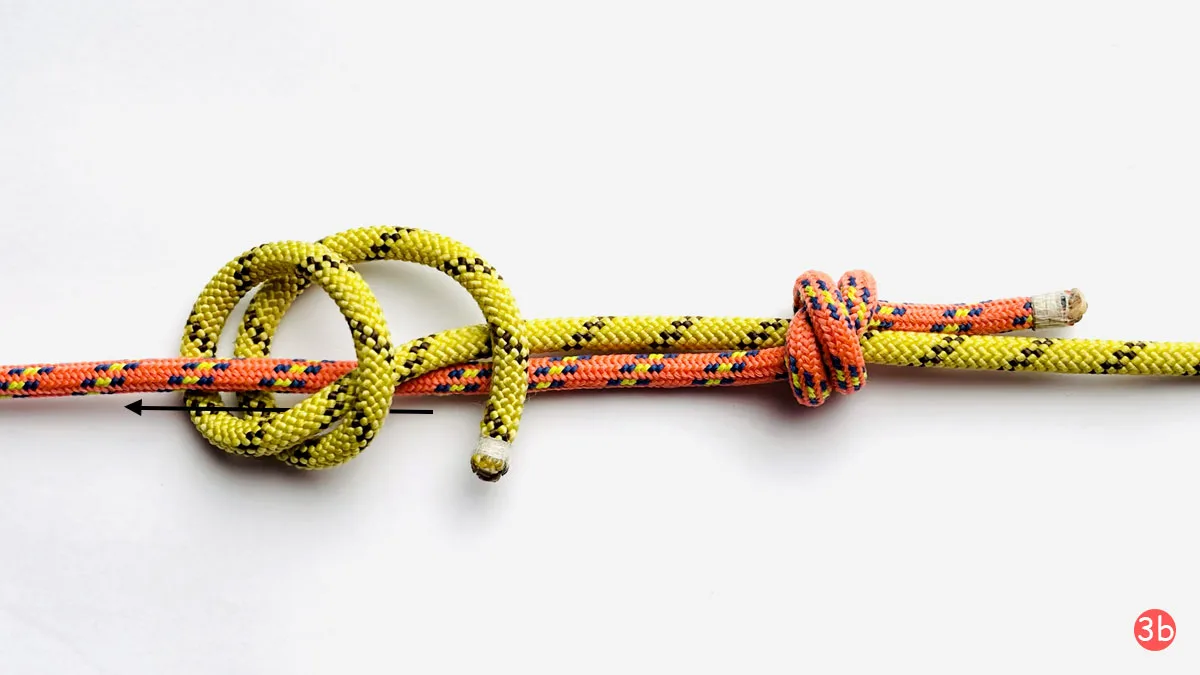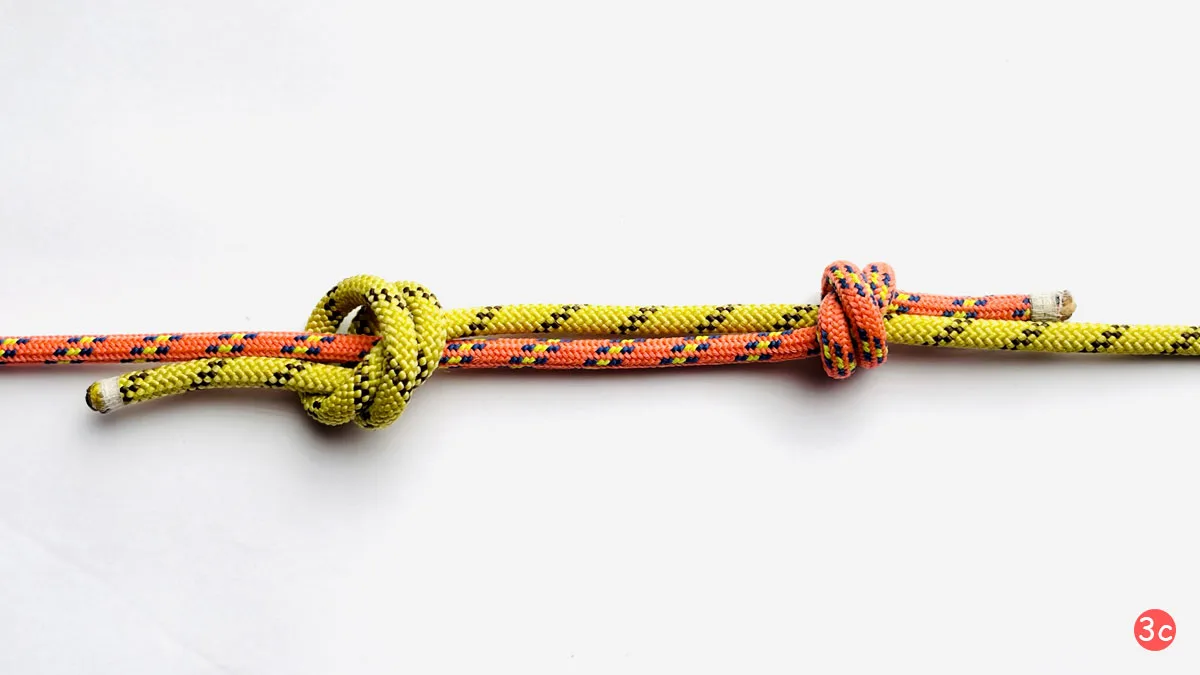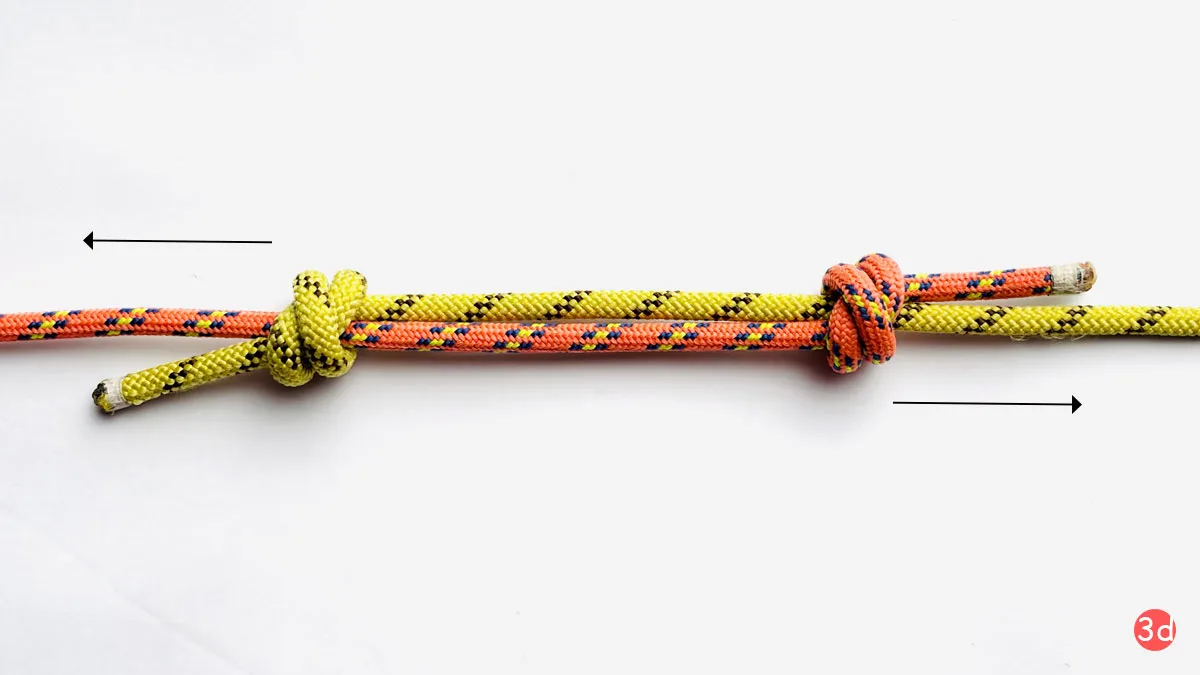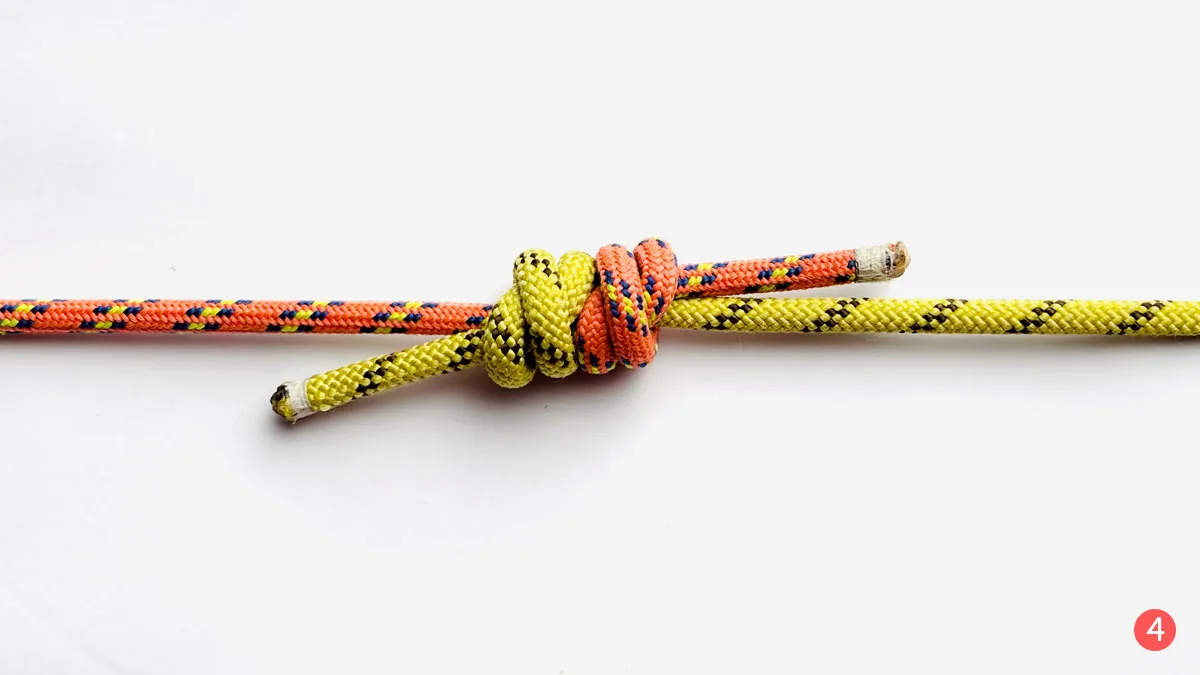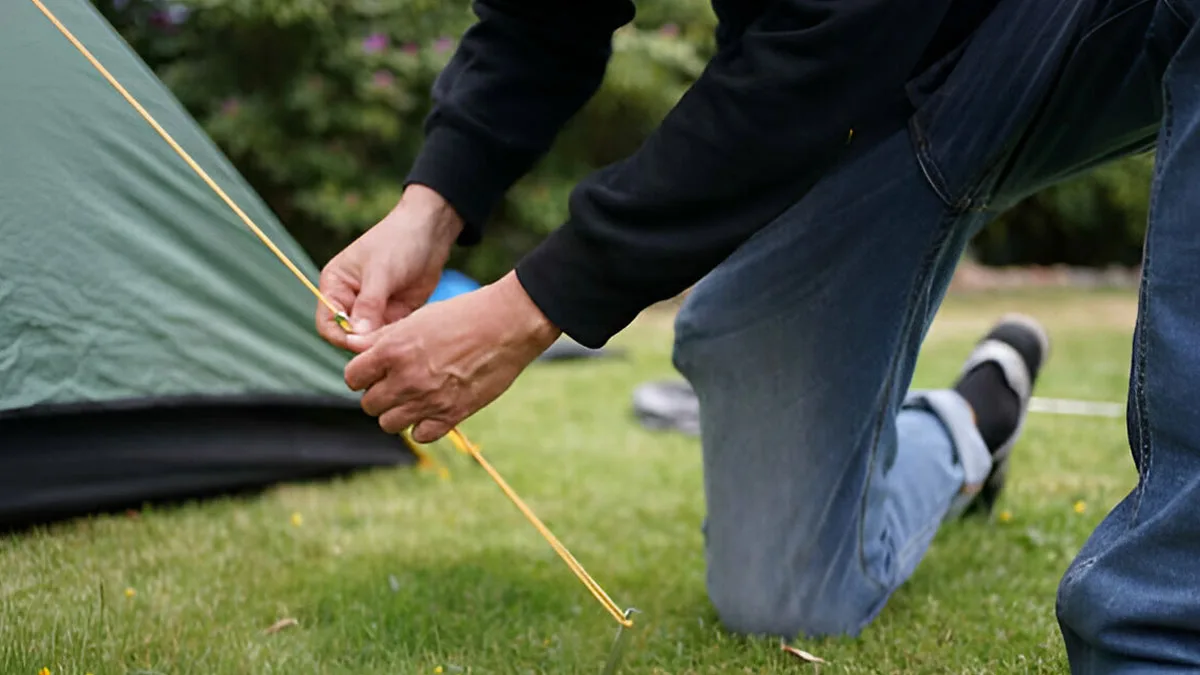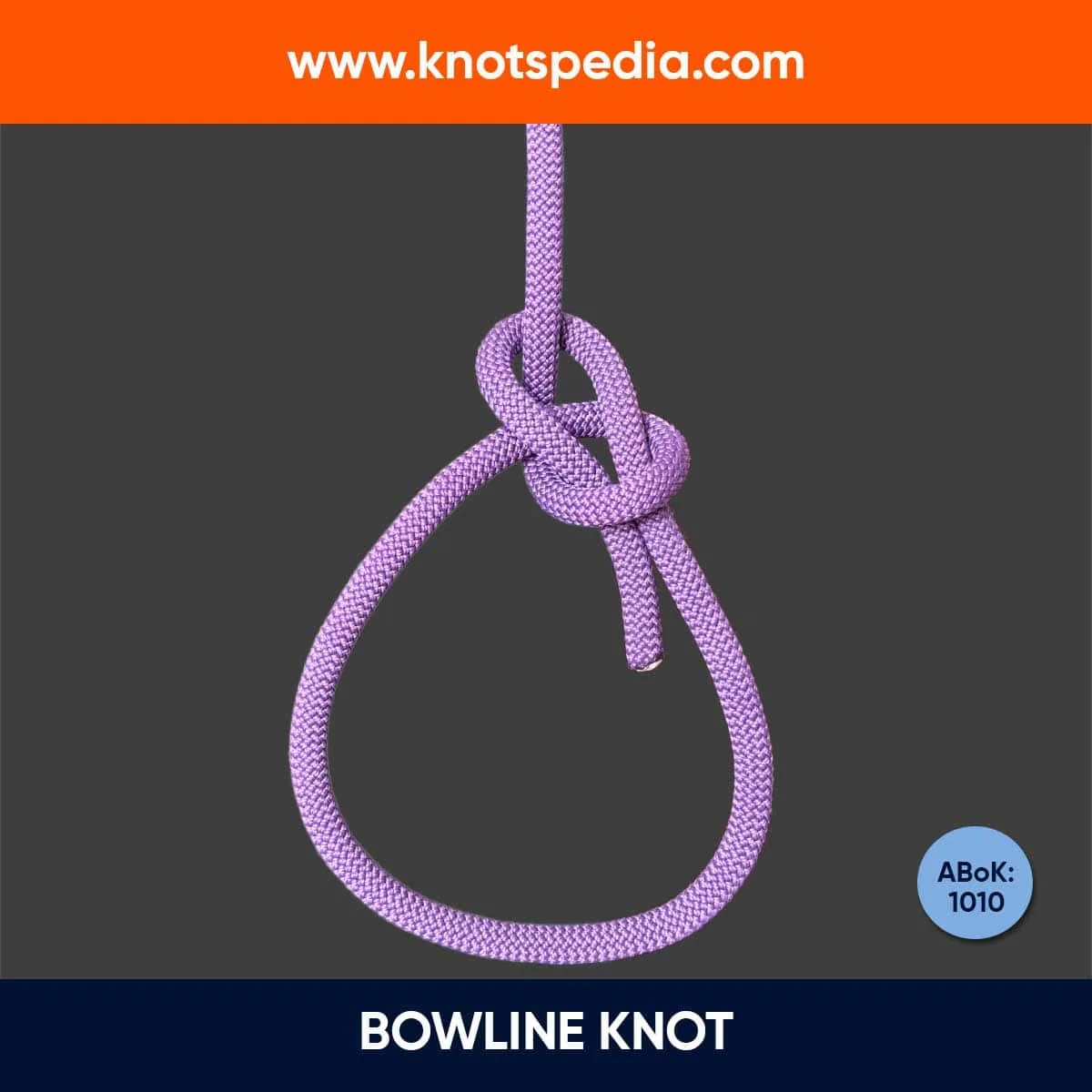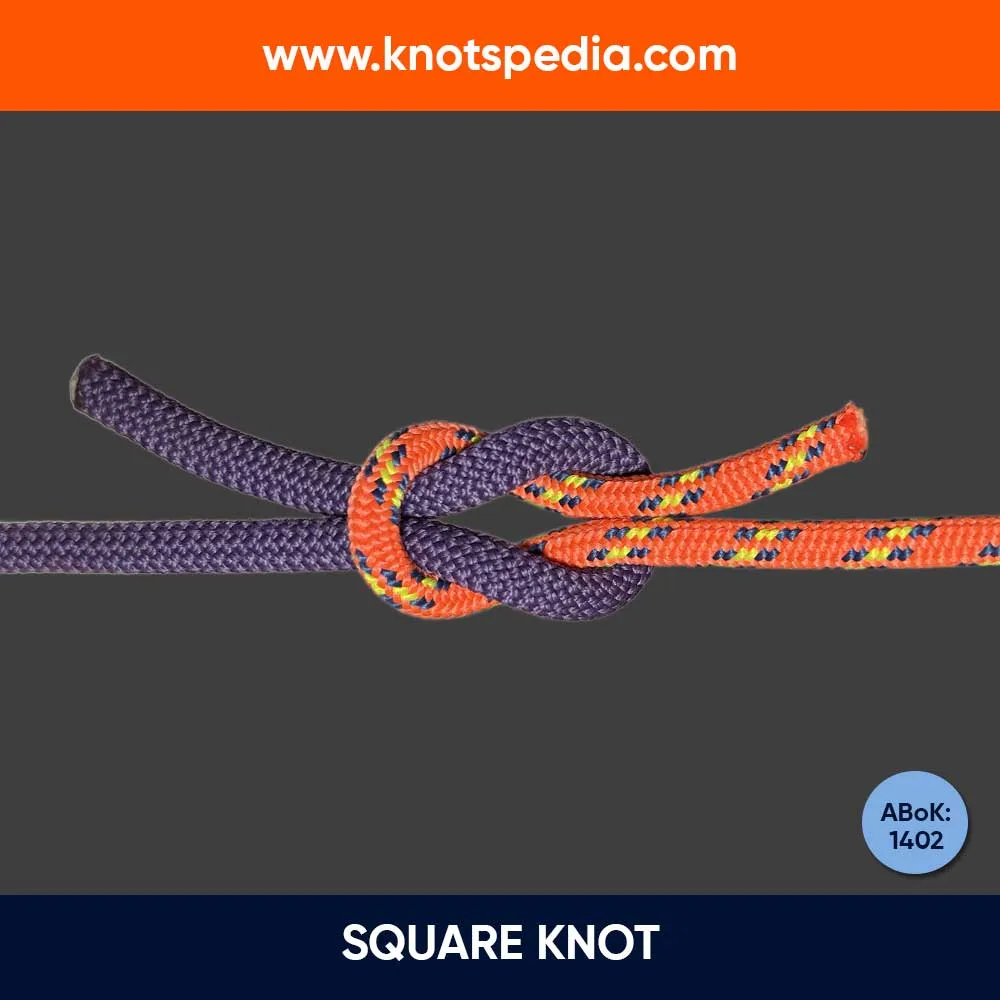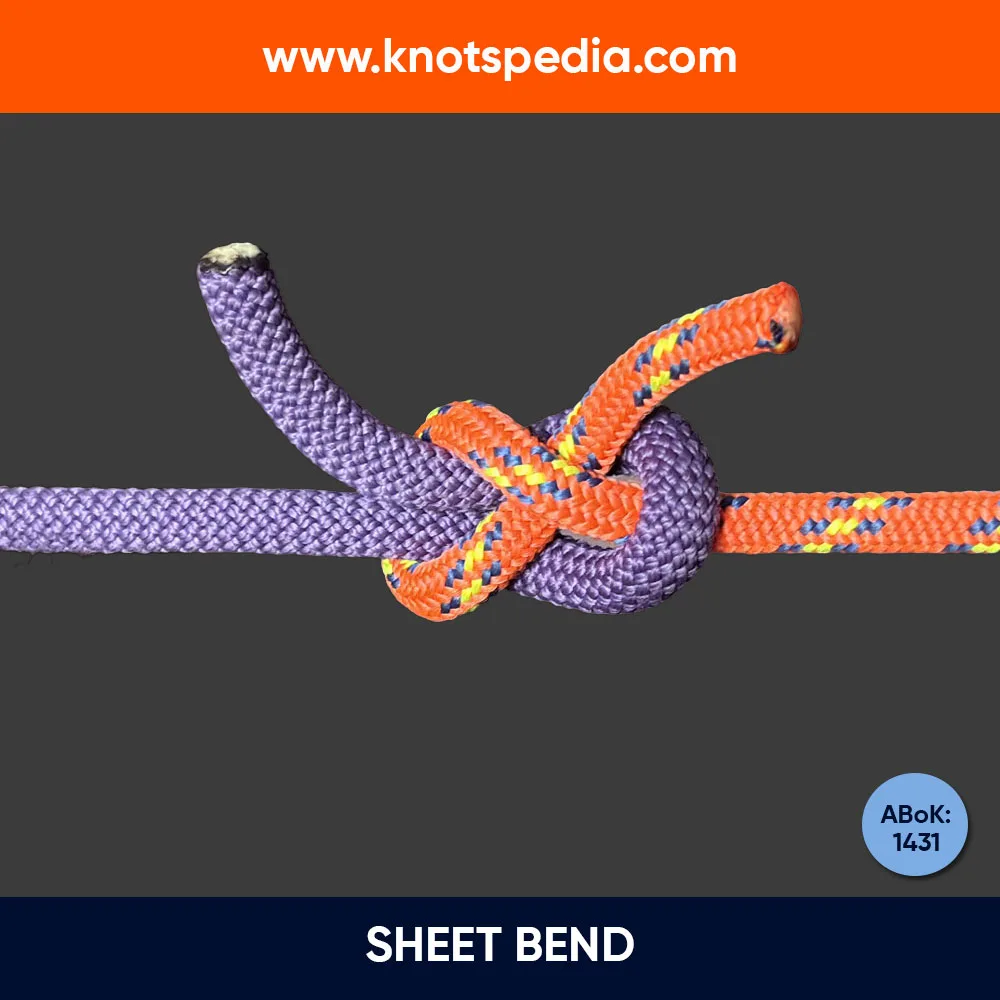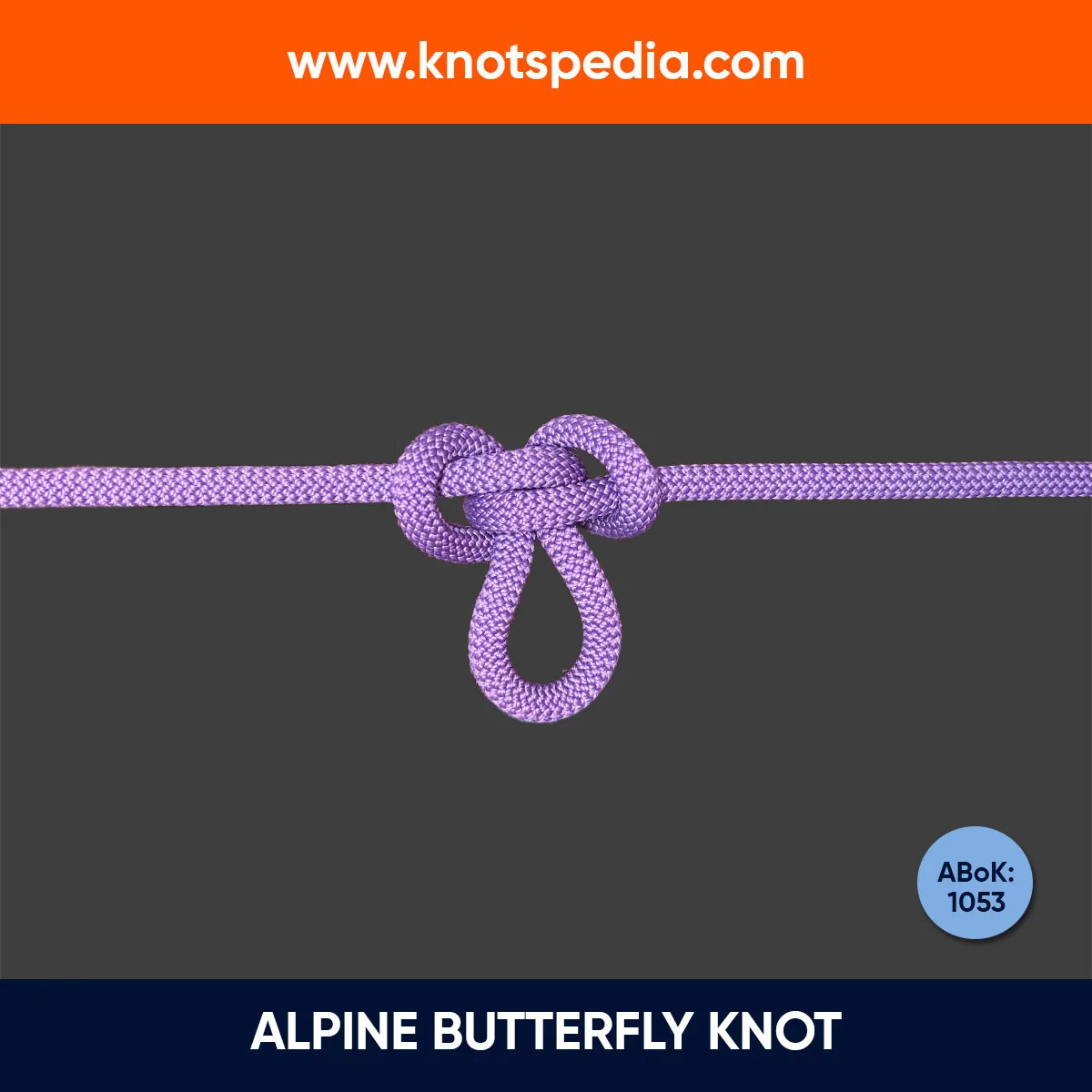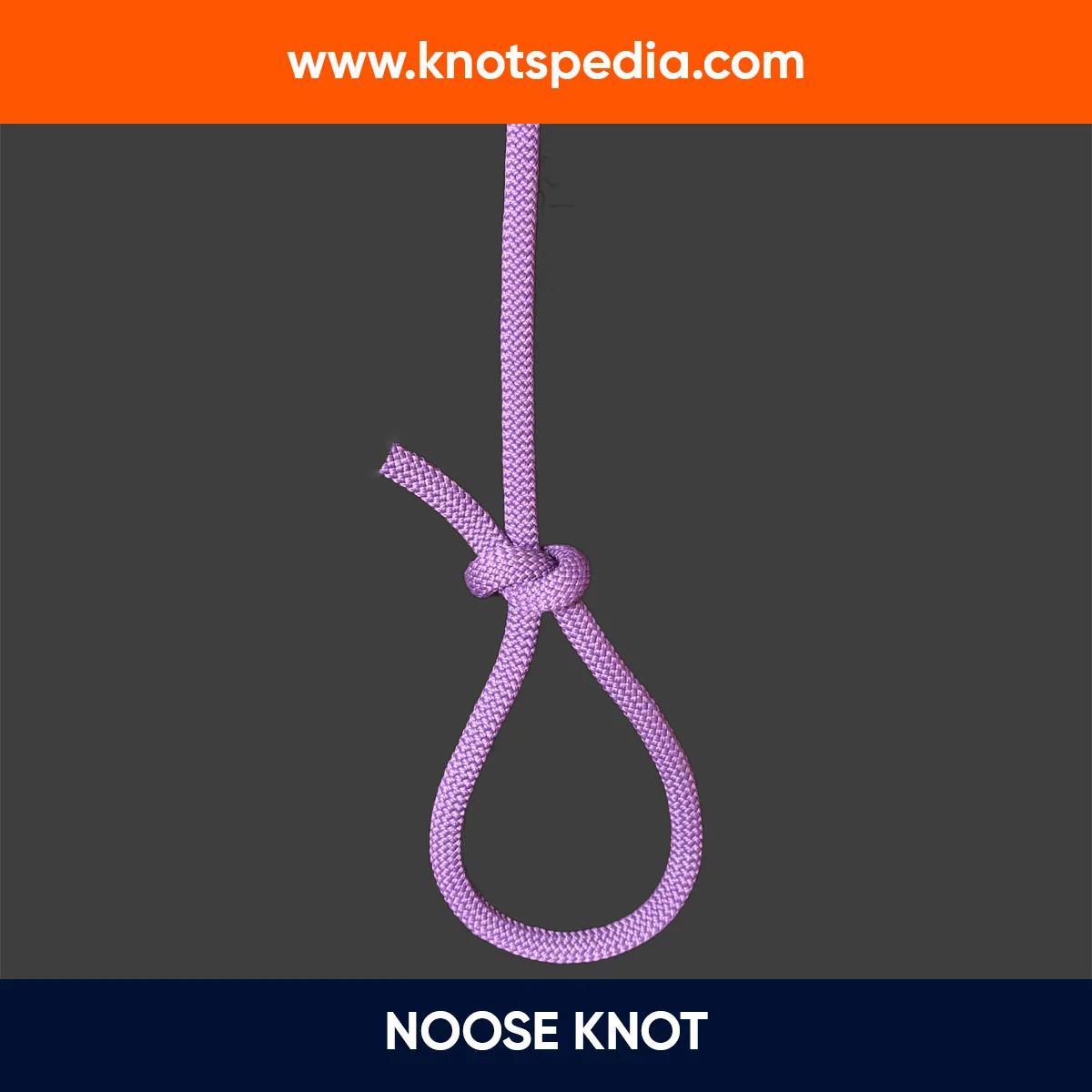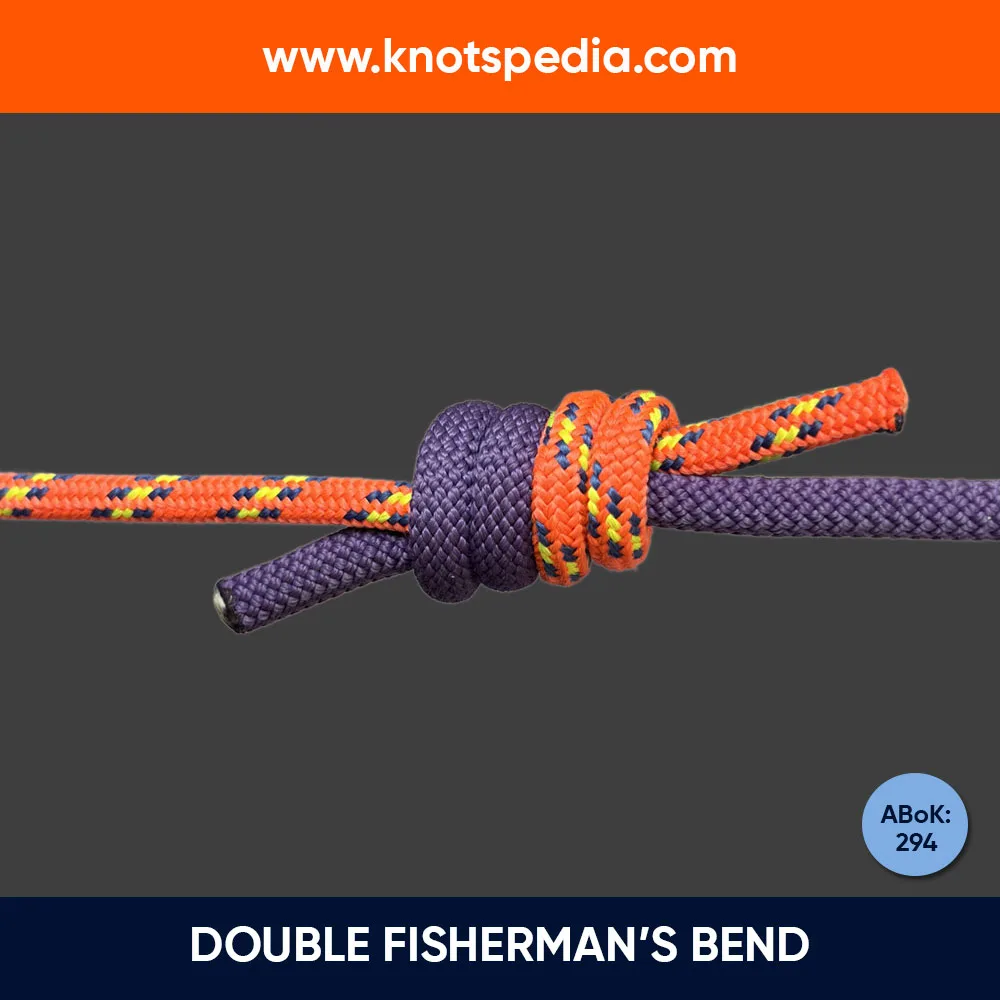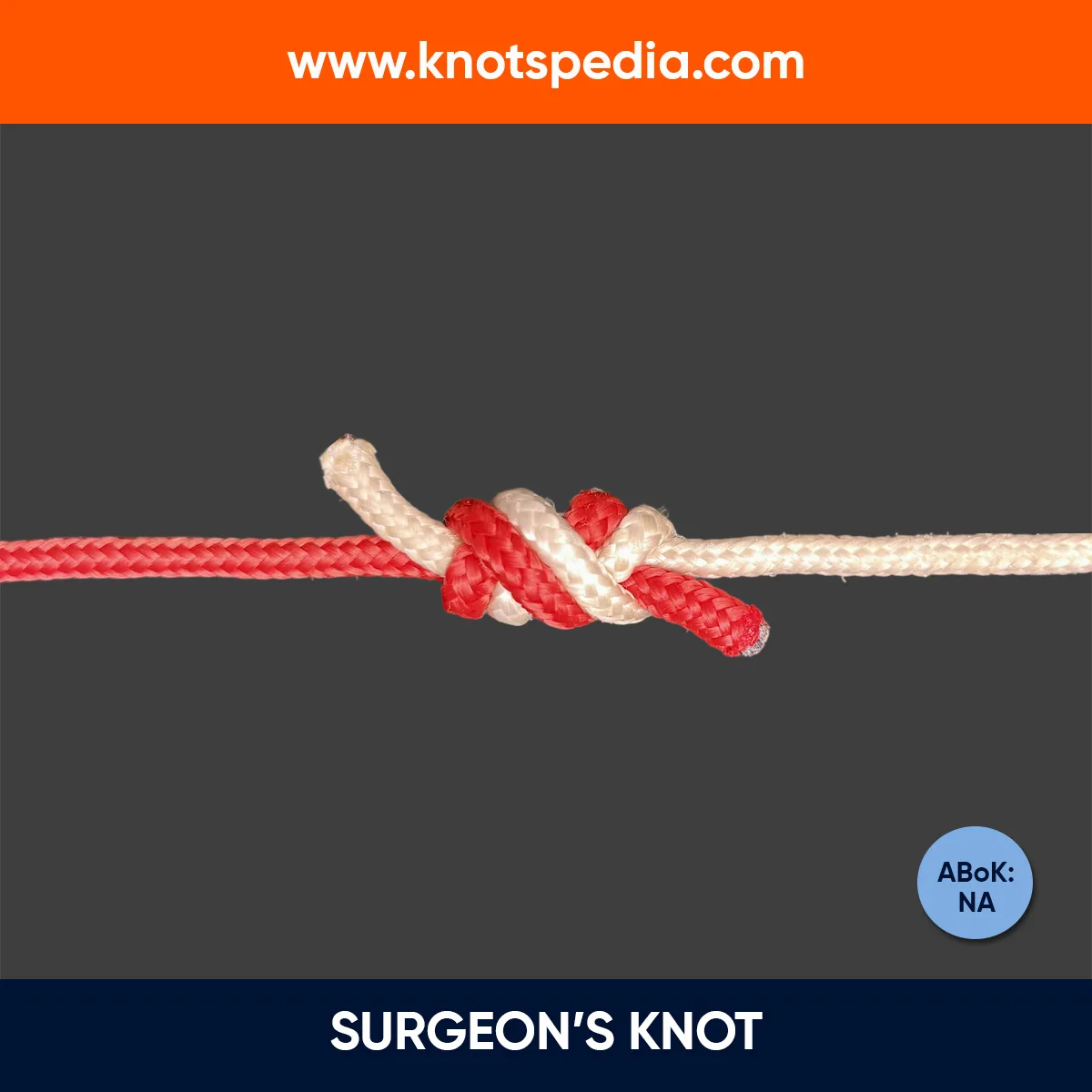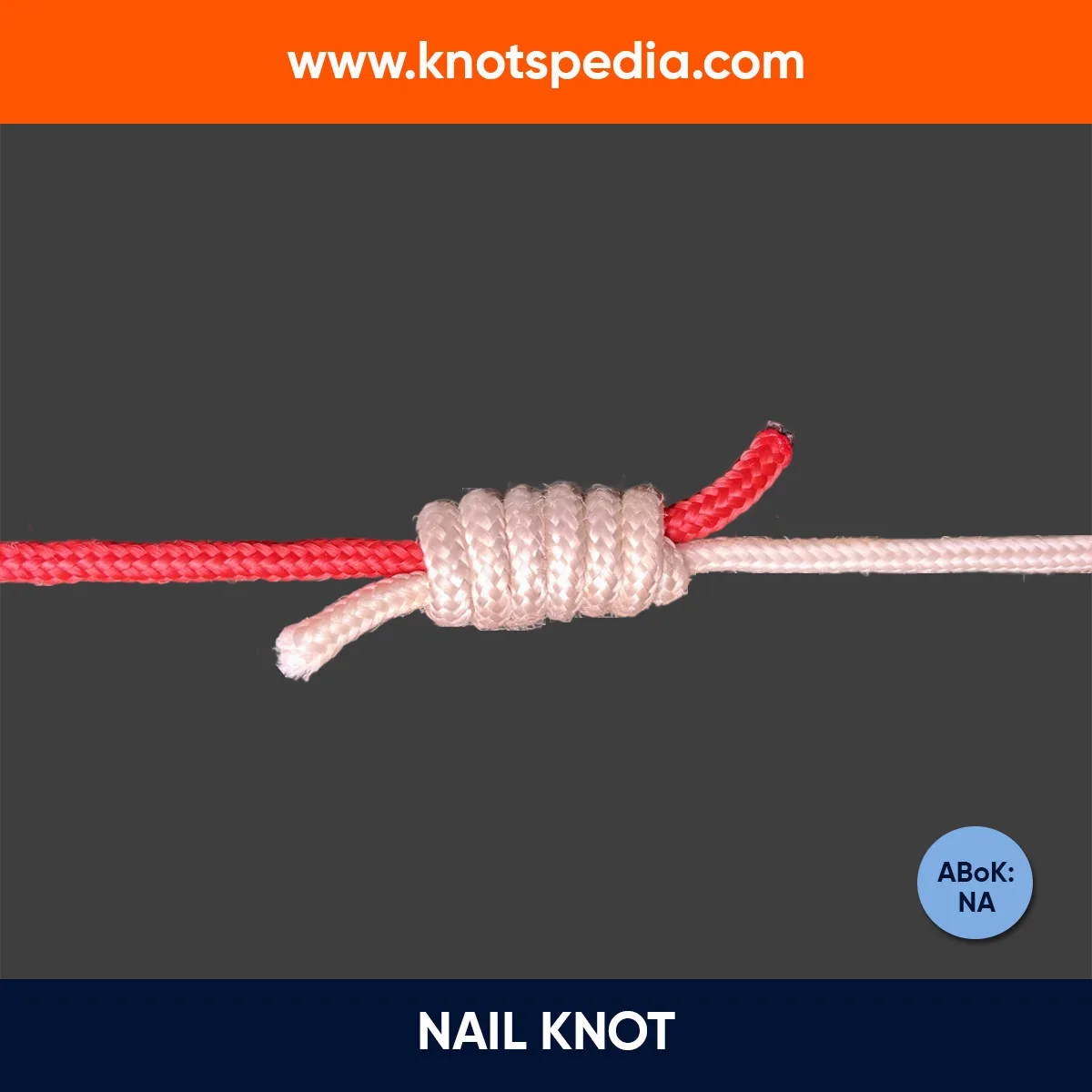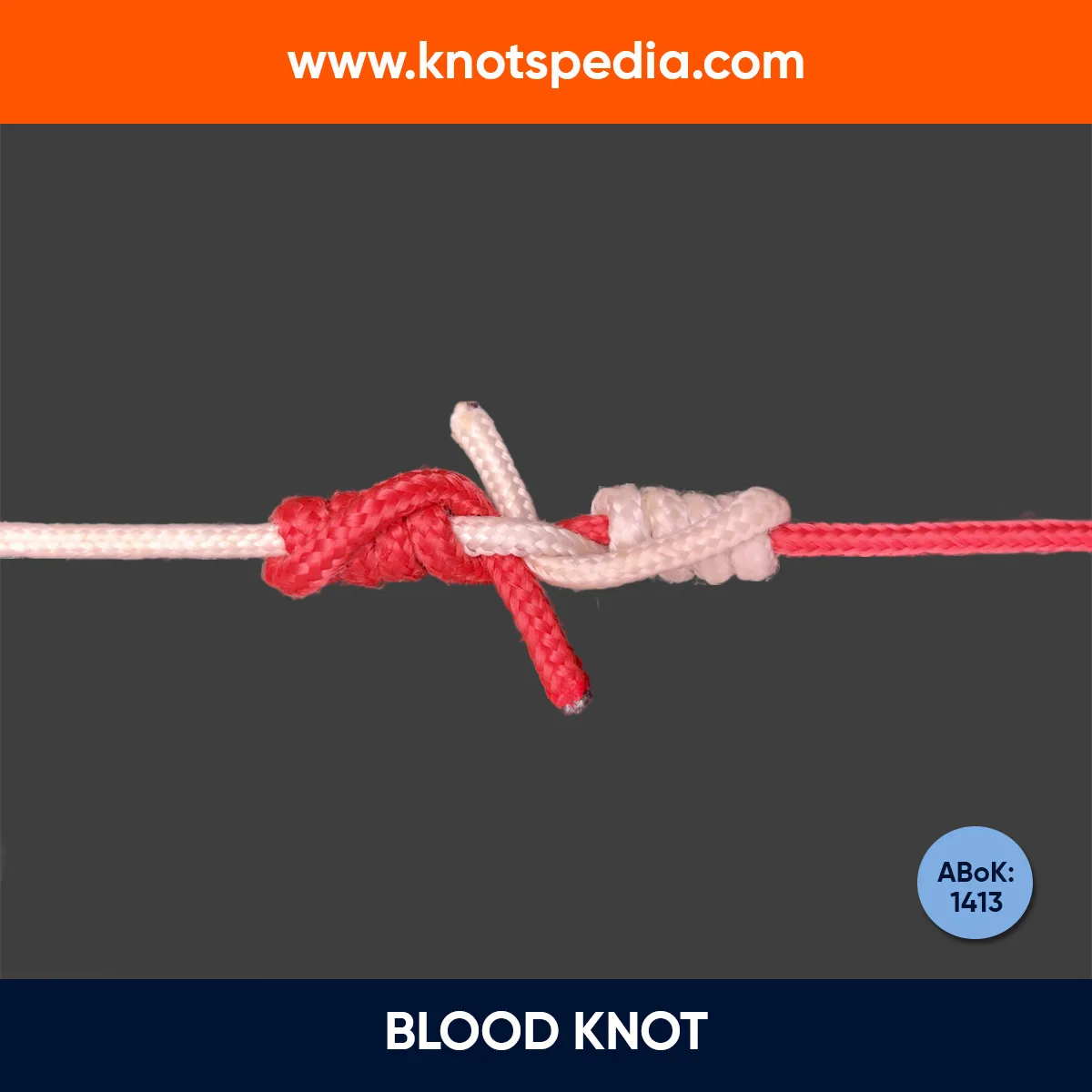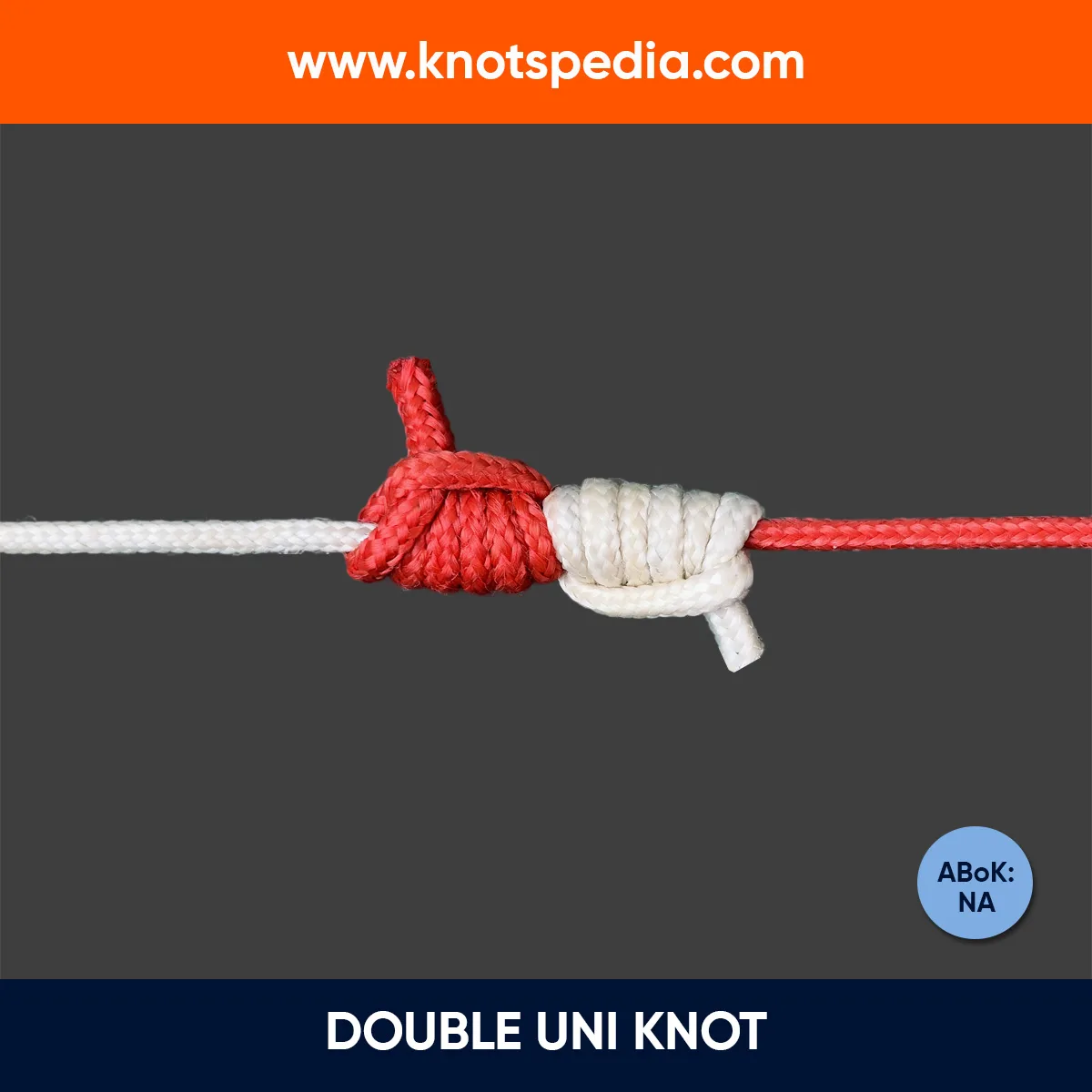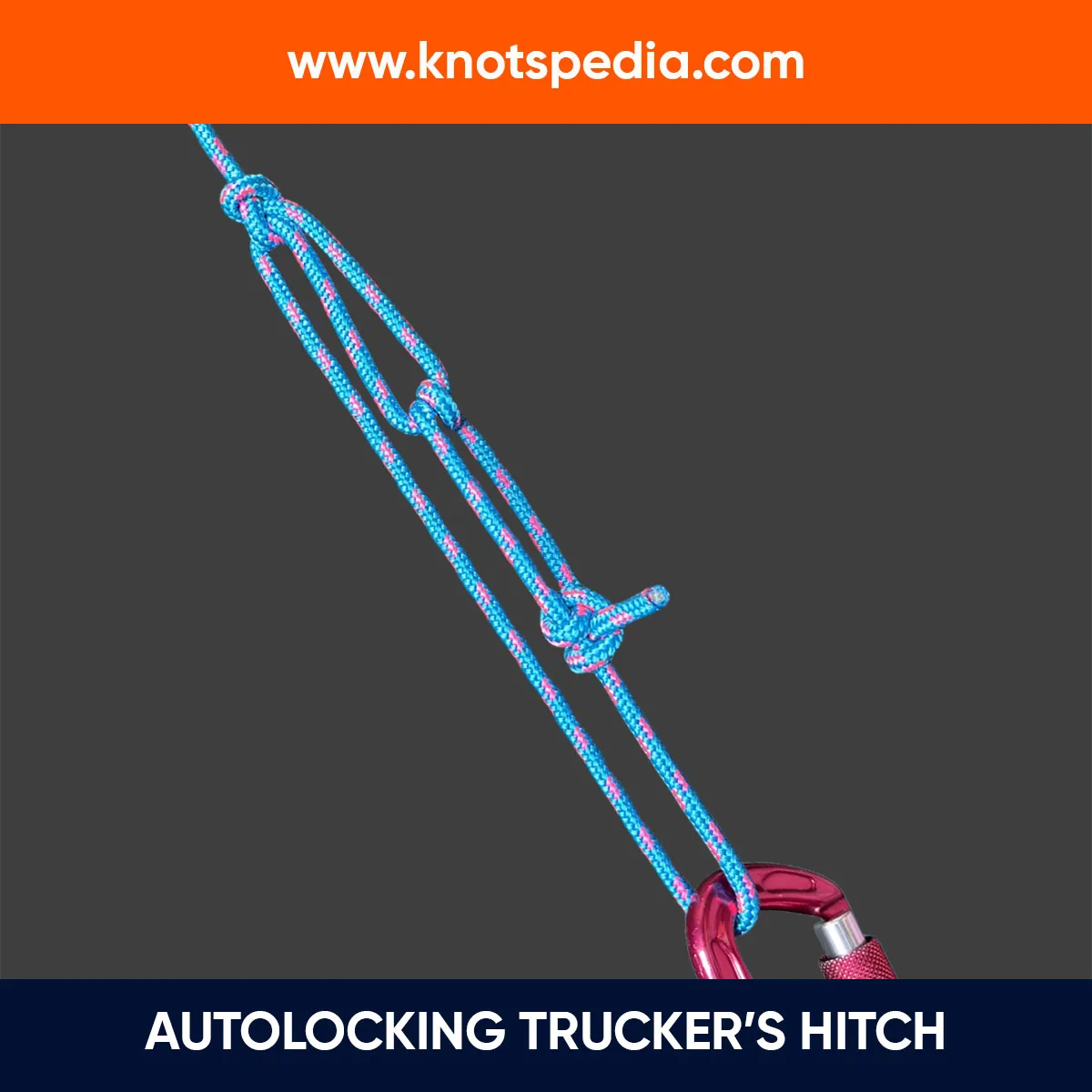The Double Fisherman’s Knot is a secure way to join two ropes together or turn a cord into a loop.
Despite the name, it is seldom used by fishermen for fishing.
It’s tied by wrapping the Double Overhand Knot (Strangle Knot) on the other rope’s standing end.
Let’s learn this knot in detail.
Double Fisherman’s Knot Details
Type: Bend
Other Names: Grapevine Bend
ABoK Reference: #294
How to Tie the Double Fisherman’s Knot
- Lay the ends of two ropes next to each other.
- Take the free end of one rope and loop it around the other rope twice. Then pass it back through the coils.
- Go through the same step with the other rope.
- Pull the standing ends to draw the knots close together.
You have tied this knot correctly if you see a parallel line on one side and the “X” pattern on the other.
Note: The tail is left short for animation purpose only. Always leave at least 6 inches of tail to account for the slippage. If you are tying a Prusik loop, you can leave about 2-3 inches of tail so it does not interfere with the hitch.
Double Fisherman’s Knot Step by Step
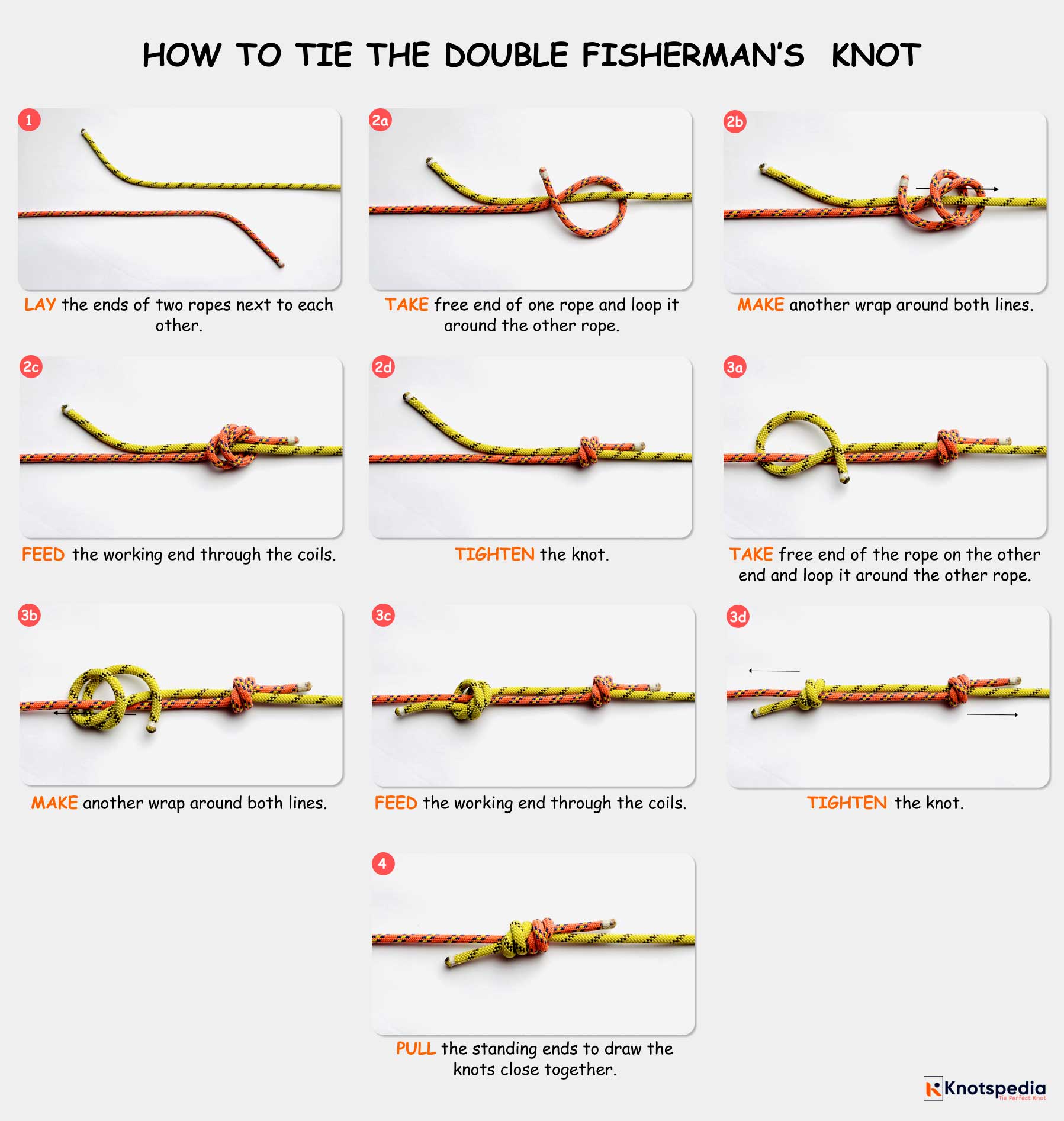
Double Fisherman’s Knot (Video Guide)
When using high-modulus ropes like Spectra, Dyneema or Kevlar/Technora for load-bearing situations, the double fisherman’s bend might not hold the load tight. Switch to a Triple Fisherman’s Knot—just add an extra wrap for better grip.
Pros & Cons
- Strong and secure
- Easy to tie and inspect
- Support heavy loads
- Hard to untie when loaded
Applications and Uses
- Join two ropes together or form a closed loop known as Prusik loop or Cordelette. It forms a fixed loop, which is used to connect the rope to the carabiner.
- In Arboriculture and Search & rescue situations where it holds strong even after being loaded heavily.
- Create the “grab handles” on kayaks or canoes.
- Make adjustable lanyards, bracelets, or even necklaces.
Difficult to Undo? Try the Zeppelin Bend
The Double Fisherman’s Bend is hard to untie once it is loaded.
It’s an advantage if you are building a Prusik loop that is intended to be permanent.
So, if you need a knot that does not jam, try Zeppelin Bend.
It’s a great alternative to the Double Fisherman’s bend because it’s secure and can be untied after being heavily loaded.
But it’s easy to get it wrong because it looks similar to the other bends, so it needs some time and practice.
Other Similar Knots
Fisherman’s Knot
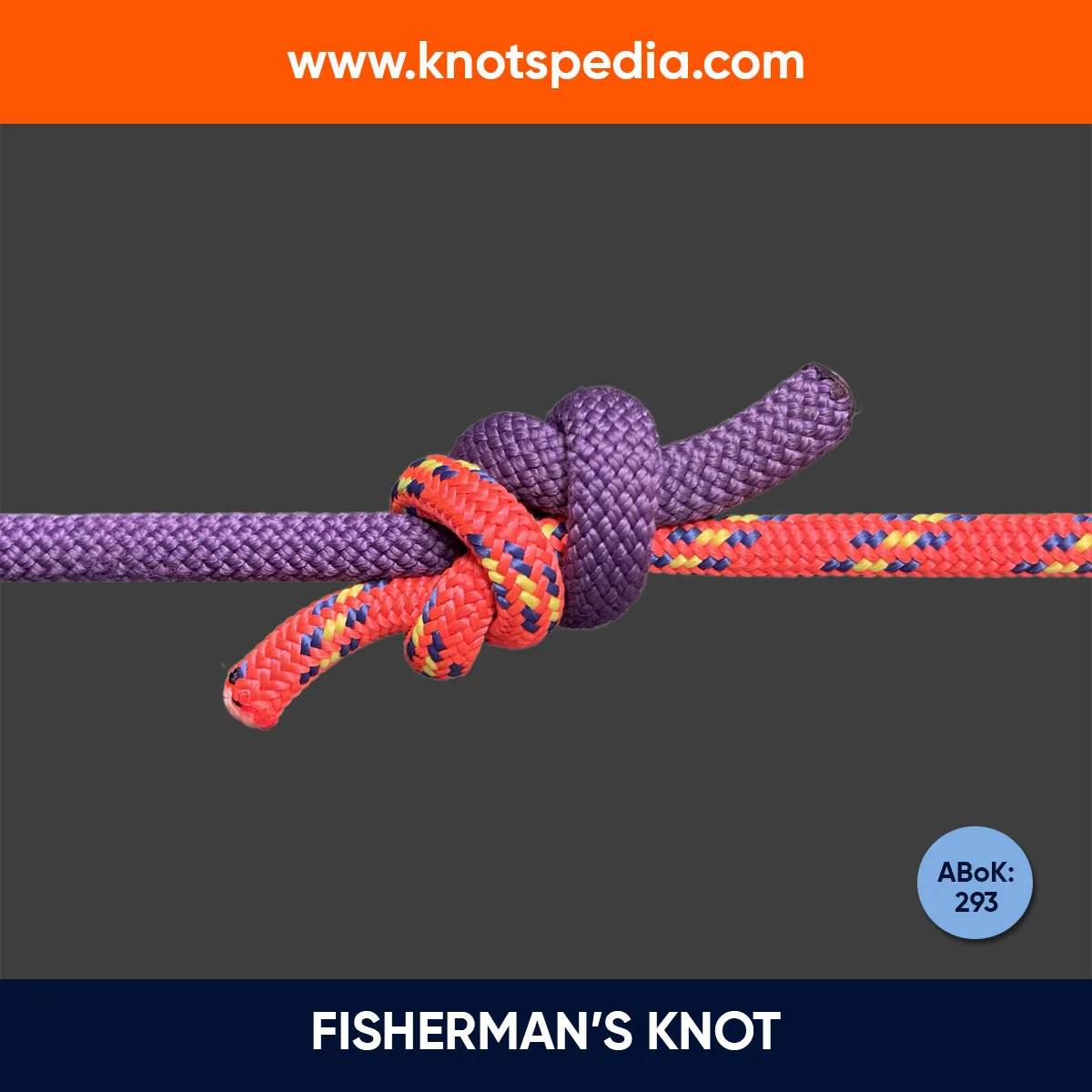
The Fisherman’s Knot is tied in a similar way to the Double Fisherman’s Knot.
It consists of two Overhand knots each tied around the standing end of the other rope.
It’s also used to connect two ropes together and is mostly used in fishing.
Figure 8 Bend
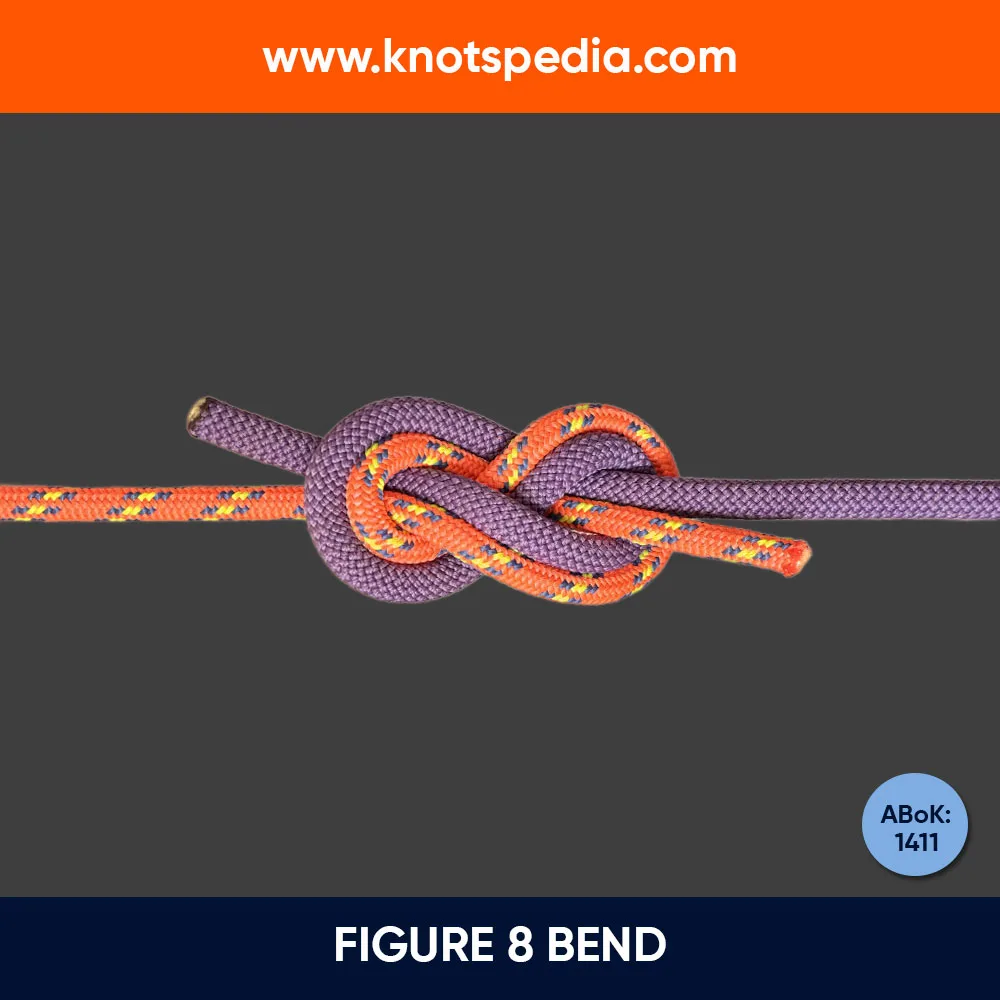
The Figure 8 bend is a “rewoven” Figure 8 knot that forms a bulky bend knot for joining two ropes together.
It works with ropes of equal diameter and should be avoided in ropes that differ much in diameter.
It’s relatively weaker than the Double Fisherman’s Bend.
The advantage of this knot is that it is easy to tie and inspect.
And, it does not jam badly when heavily loaded.
Flat Overhand Bend (European Death Knot)
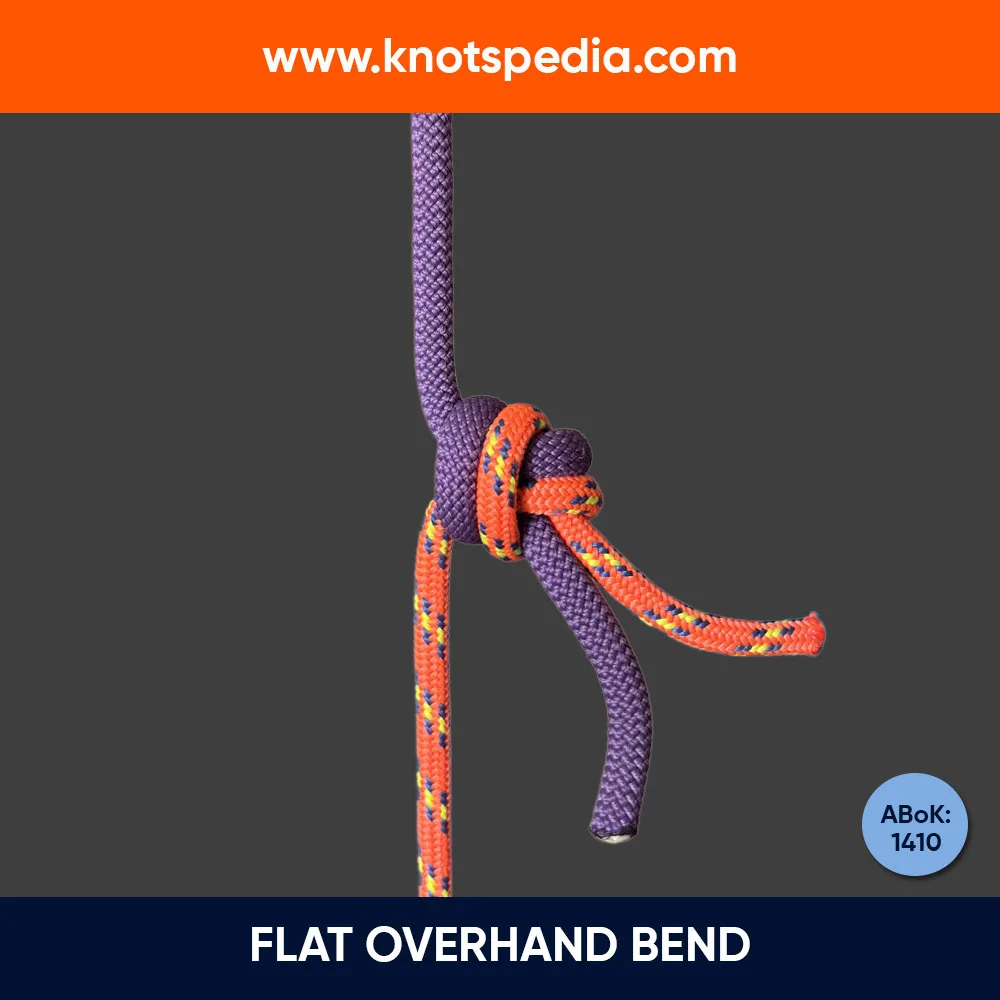
The Flat Overhand Bend joins the two climbing ropes together with a simple Overhand Knot.
It’s less strong than the Double Fisherman’s knot, but it has a good track record, although it might not work as expected with wet ropes.
Share this Article!
